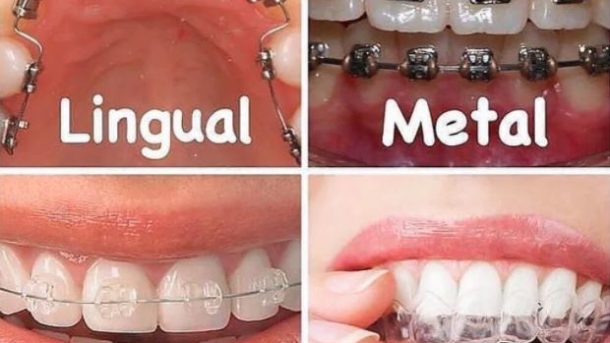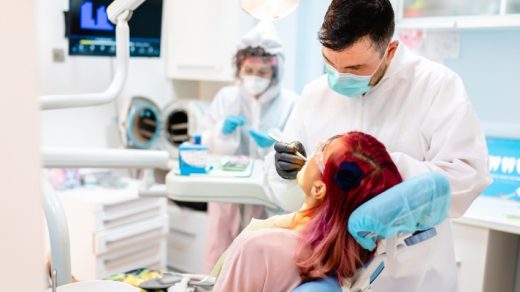Orthodontic treatment or acceptance to Types of Braces for teeth has gained a lot of acceptance in recent times, many factors such as to correct spaces, crowding, aesthetic appearance or functional corrections are being done using Orthodontic treatment plans. The acceptance and increase in number of people willing to go for correction of teeth defects is due to the availability of more options than what it was a decade ago.
With the availability of more aesthetic options like Aligners which are virtually invisible, more and more adults are willing to correct the aesthetic appearance of their teeth. But the type of Braces which can be used differs from patient to patient along with multiple additional appliances required to aid in the treatment process.
“Note: We are not mentioning the pricing of Different types of Braces as they vary to an extreme extent depending on Country, Clinic, Orthodontist expertise, etc. So giving an estimated cost might vary from clinic to clinic and patient to patient depending on the duration and additional appliances required.”
The 5 Types of Braces include
- Metal
- Ceramic
- Self Ligating
- Lingual Braces
- Clear Aligners

Types of Dental Braces
Metal or Conventional Braces:
These are the traditional Metal braces which come into mind when you hear about braces or orthodontic treatment. Earlier when Orthodontic treatment was first introduced, each tooth was encircled with a metal band, which has now been changed with a small bracket on the surface of the tooth to hold the wire in place. A single band can be used on the molar teeth as anchors.
Advantages of metal braces are – they are Smaller, more comfortable, easy to maintain and most effective in attaining movement. Longer 4-8 weeks appointment gaps, most affordable. Better patient compliance.
These advantages make them best suited for children and young adolescents as they are easy to maintain and have a harder bond when compared to the rest of the braces. The wires are held in place to the brackets using elastics which come in all types of colors. Being fixed it is preferred by parents
Disadvantages of Metal Braces:
Not aesthetic and more noticeable, Difficult to maintain, Can lead to Periodontal problems in patients with poor oral hygiene.
Ceramic Braces:
These are also called as Ceramic Braces or clear braces, they are made out of a clear material which is tooth colored. It is similar in shape and design as the metal braces but is less visible. Patients who opt for Ceramic braces are young adults and adolescents who want to aesthetically straighten their teeth but are not compatible with aligners as it is more affordable.
Ceramic braces are a bulkier than metal braces and tend to stain more easily if not maintained properly. These are not advisable for all patients but are a good option for certain patients.
Self Ligating Braces:
These are similar to Metal braces in appearance and function but these have metal doors to keep the wires in place instead of elastic bands as in metal braces. In traditional braces the wires are kept in place with the help of Elastic bands or metal ties which tend to loose its power or elasticity after a certain number of days and no movement is achieved after this.
While on the other hand the Self ligating brackets have a door mechanism which keeps the wire in place and are always active keep moving the teeth faster as compared to traditional braces. There are two types of Self ligating braces – Active brackets and Passive brackets.
The Active brackets have a sliding spring clip mechanism which press against archwire and always keep them active moving the teeth.
The Passive brackets have a sliding mechanism which do not press against the archwire and thus are used to retain teeth without achieving movement.
Lingual Braces:
The term Lingual in dentistry suggests towards the tongue, so lingual braces mean placing the braces on the lingual or inner side of the teeth. This is a specialized technique which is the least commonly used procedure in orthodontic treatment, it requires special technique and methods. This option is restricted to certain types of cases and cannot be used in all cases, but these give a certain advantage over other methods giving complete invisibility, etc.
There are certain disadvantages of Lingual braces as well, as they are placed on the inner side it will lead to change in speech for a certain period of time (lisp) and can also lead to trauma or ulcerations to the teeth.
Clear Aligners:
This is the latest technology in Orthodontic treatment which has gained a lot of popularity in recent years. This technology was popularized by a company called Invisalign which has become synonymous with Aligners. Clear Aligners have gained a lot of popularity due to their advantages of being Clear and transparent and almost invisible. It is most preferred by working professionals, but it has its limitations as well in comparison to traditional braces.
The main Advantages of Clear aligners are – they are clear and transparent virtually invisible, removable, easy to maintain your teeth, easy to brush and floss, requires less dentist visits, faster than traditional braces in some cases.
The main Disadvantage of Clear Aligners is the “High Cost” and the second one is the limitations to certain mal occlusions.
Article by Varun Pandula
I am Varun, a Dentist from Hyderabad, India trying my bit to help everyone understand Dental problems and treatments and to make Dental Education simplified for Dental Students and Dental fraternity.
If you have any doubts feel free to contact me or comment in the post, thanks for visiting.






